#vera c. rubin observatory
Explore tagged Tumblr posts
Text

Spaceaccordingtoskylar shares some images from the Vera Rubin Observatory and explains how they differ from Hubble and JWST.
instagram
#planet alphabet#astronomy#stars#Vera C. Rubin Observatory#galaxy#Spaceaccordingtoskylar#spectacular#chile#Instagram
28 notes
·
View notes
Text
See stunning first images from the Vera C. Rubin Observatory
Rubin’s first glimpse of the firmament is predictably bursting with galaxies and stars. But the resolution, breadth, and depth of the images have taken astronomers aback. “I’m very impressed with these images. They’re really incredible,” says Christopher Conselice, an extragalactic astronomer at the University of Manchester in England. One shot, created from 678 individual exposures, showcases…
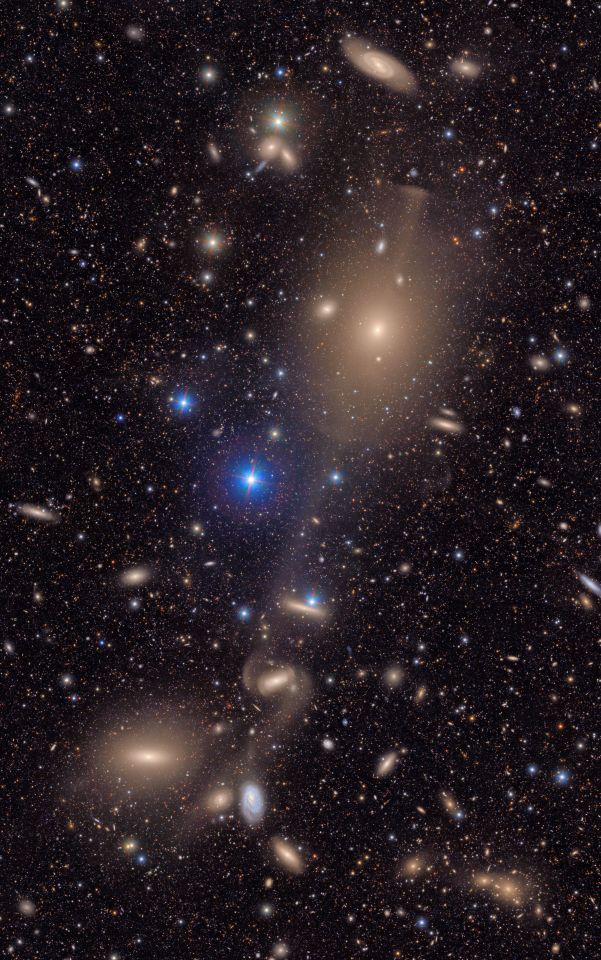
View On WordPress
#Asteroids#astronomy#dark energy#dark matter#first light#galaxies#near-Earth objects#Rubin Observatory#solar system#Telescope#telescopes#Vera C. Rubin Observatory
14 notes
·
View notes
Text
youtube
Made from over 1100 images captured by NSF-DOE Vera C. Rubin Observatory, the video begins with a close-up of two galaxies then zooms out to reveal about 10 million galaxies. Those 10 million galaxies are roughly .05% of the approximately 20 billion galaxies Rubin Observatory will capture during its 10-year Legacy Survey of Space and Time. Explore the Cosmic Treasure Chest. Credit: NSF–DOE Vera C. Rubin Observatory
14 notes
·
View notes
Text
Space Round Up: Published 7/20/25
6 notes
·
View notes
Text
youtube
This is what I’ve been working on for almost 10 years! And what inspired my custom Lego designs! It’s so cool (and also kinda weird) to finally have it at the observatory!
#Vera C. Rubin Observatory#Rubin Observatory#LSST Camera#this has been quite the project#lots of changes coming now#Youtube
4 notes
·
View notes
Text
For all that humanity has learned about the universe, the vast majority of this cosmic plane in which we exist remains in the dark. The best theory yet describes a universe in which the galaxies, the stars, the planets and all of us make up only 5 percent of all the matter and energy there is. The other 95 percent is dark matter, an invisible substance that glues everything together, and dark energy, an unknown force ripping the universe apart.
Vera C. Rubin, the astronomer whom the Rubin Observatory is named after, uncovered evidence of dark matter in the 1970s. By studying the swirling motion of galaxies, driven by the gravity of the mass within them, she deduced the existence of a type of matter that could not be directly observed by telescopes, because it did not emit, reflect or absorb any light.
In the decades since, theoretical physicists have come up with countless ideas about the composition of this so-called dark matter. Experimental physicists have built ever larger detectors in an attempt to observe it directly, so far to no avail. All the while, astronomers have helped narrow the possibilities of its nature by relying on increasingly powerful telescopes that measure how dark matter influences the structure and motion of the universe that can be seen.
https://www.nytimes.com/2025/06/19/science/telescope-vera-rubin-dark-matter.html
0 notes
Text
First pictures captured by the world's largest digital camera released: 3,200-megapixel images reveal cosmic beauty | - The Times of India
The world’s most powerful digital camera has just delivered its first images, and they are nothing short of spectacular. The 3,200-megapixel Legacy Survey of Space and Time (LSST) camera, stationed at the Vera C. Rubin Observatory in Chile, has revealed cosmic scenes in stunning detail never seen before. Capturing vast swathes of the night sky, the camera unveiled breathtaking views of…
#200-megapixel images#3#cosmic beauty#high-resolution astronomical images#Legacy Survey of Space and Time#LSST#Vera C. Rubin Observatory#world&x27;s largest digital camera
0 notes
Text
First Images from Rubin Observatory are Spectacular!
0 notes
Text
0 notes
Text
Groundbreaking Vera Rubin Observatory reveals first images
0 notes
Text
California’s Eye on the Cosmos: The SLAC-Built Camera That Will Time-Lapse the Universe
Today marks the release of the first images from what’s being called the most powerful astronomical discovery machine ever created. A breathtaking zoomed-in glimpse into the cosmos: this first image from the Vera C. Rubin Observatory reveals a deep field crowded with galaxies—spirals, clusters, and glowing cores—offering just a taste of the observatory’s power to map the universe in…
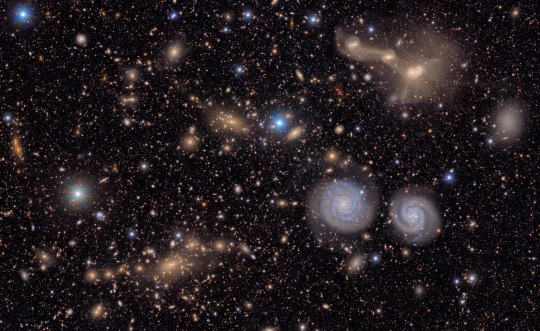
View On WordPress
#astronomy#california#Cerro Pachón#Chile#Hubble#Hubble Deep Field image#James Webb#Legacy Survey of Space and Time (LSST)#NASA#science#SLAC#Space#universe#Vera C. Rubin Observatory
0 notes
Text

The camera on the Vera C. Rubin Observatory, seen during final stages of completion at SLAC National Accelerator Laboratory in Palo Alto, contains 189 individual sensors and will take photos at 3.2 gigapixels—the largest digital camera ever built.
Is There A 9th Planet Out There? We May Soon Find Out.
Starting in 2025 The Vera C. Rubin Observatory Will Increase the Number of Known Objects Circling the Sun by Roughly Tenfold, Spotting New Comets, Exotic Asteroids From Other Stars, and Perhaps Even the Elusive Planet Nine.
— By Robin George Andrews | Photographs By Christie Hemm Klok | January 09, 2024
Our solar system is home to wondrous worlds, mysterious moons, astounding asteroids, and curious comets. But despite myriad telescope surveys of the night sky, most of our celestial neighborhood remains unseen and unknown.
That’s about to change. Thanks to a revolutionary new telescope, huge swaths of the undiscovered solar system will finally come into view. The Vera C. Rubin Observatory (VRO), currently under construction atop the Cerro Pachón ridge in Chile, 8,700 feet up, is not merely going to advance the field of astronomy—it’s going to revolutionize it. A marvel of engineering, software, and scientific ingenuity, this machine has one overarching goal: to document the entire night sky.

Lead Engineer, Travis Lange, inspects the front of the VRO camera lens with a high powered flashlight, looking for dust. The heart of the new observatory, this advanced camera will image the entire Southern Hemisphere sky many times over.
This includes distant objects, from convulsing stars to cosmic explosions, but also the countless objects in the solar system that have eluded skygazers. “It’s going to be a quite complete catalogue of everything in the solar system out to and beyond Neptune,” says Mario Jurić, an astronomer at the University of Washington working with VRO.
The asteroid tally will almost immediately skyrocket. The first asteroid was discovered in 1801. Two centuries later, a million were known. VRO will double that in three to six months.
The observatory may even find the hypothetical Planet Nine, a large world that some astronomers believe is hiding at the solar system’s peripheries. “Probably within the first year we’re going to see if there’s something there or not,” says Pedro Bernardinelli, an astronomer at the University of Washington.
And VRO is set to spot dozens of interstellar objects—visiting entities that have been ejected from other star systems. With these exotic shards of space rock, “we can literally start to figure out what other planetary systems look like,” says Juríc.
Over the course of its ten-year survey, set to commence in 2025, VRO will give astronomers a new encyclopedia of the solar system. “And then we get to understand what that’s all telling us,” says Juríc—about the very origins and evolution of our galactic cradle.
“I think it’s going to rewrite the history books,” says Meg Schwamb, an astronomer at Queen’s University Belfast working with VRO.
Chile’s Almighty Eye
The Vera C. Rubin Observatory, jointly funded by the National Science Foundation and the Department of Energy, is named after the famed astronomer who revealed the existence of dark matter—an as-yet-undetected substance binding stars and galaxies together. Designed to address a multitude of cosmic queries, the cutting-edge observatory is a beast of a scientific instrument.
“Everything is big about Rubin,” says Sandrine Thomas, the deputy director for VRO construction. “The telescope is superfast. The camera is huge and very precise. The detector is also extremely big. The number of pixels is gigantic.”
Most observatories have either a wide field of view, meaning they can see more of the sky at once, or a huge mirror, which allows more light to be gathered, revealing fainter and more distant objects. But thanks to its paradigm-shifting engineering, VRO has both. It will peruse the entire night sky viewable from the Southern Hemisphere countless times during its decade-long survey, seeing almost everything, almost everywhere.
“This is a once-in-a-generation leap,” says Bernardinelli.
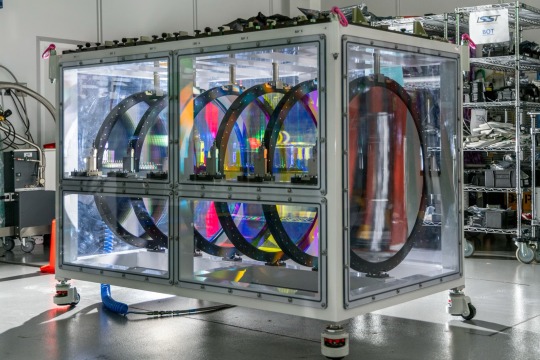
A large airtight box holds filters for the VRO camera. Nitrogen continuously pumped into the chamber is dryer than natural air and prevents the glass from warping.
Beyond The Veil
Many of the worlds VRO will spot will be in the asteroid belt. “This is the mortar left over from planet formation,” says Schwamb.
The observatory will undoubtedly find many modestly sized asteroids orbiting close to Earth, the sort that have so far eluded asteroid-hunting surveys. That means VRO could find future Earth-impactors before they find us, so that we can attempt to avoid a catastrophic asteroid impact.
Other asteroids may be found drifting inside Earth’s orbit, perhaps as part of a hypothesized reservoir of space rocks swimming about close to Venus. And while VRO will populate the inner solar system, it is also set to reveal the architecture of the outer solar system for the first time.
As well as increasing the tally of moons belonging to Jupiter and Saturn (the famously ringed planet currently has 146 confirmed moons), VRO will be able to spy comets starting to effervesce further out than ever before. Apart from a few highly volatile elephantine comets, most of these far-ranging ice balls are not spotted until they approach the sunlit confines of the inner solar system, where they heat up and shed a trail of icy debris.
VRO may permit astronomers to fulfil a long-time dream: find a comet long before it plunges sunward for the first time in its existence. This would represent a pristine, unaltered record from the dawn of the solar system. With enough advance notice, astronomers could even chase it down before it starts cooking. “We’ll be able to send a spacecraft to get up close and personal,” says Schwamb.
Comets come from two places. The Oort Cloud, a hypothesized shell of icy worlds at an unfathomable distance from the sun, has never been directly seen—and VRO won’t change that. But the Kuiper Belt, a torus-shaped ring of gelid objects, including the dwarf planet Pluto, will have its portrait taken by VRO in considerable detail.
Currently, only a few thousand Kuiper Belt objects, or KBOs, have been identified. VRO is expected to find at least that many. The observations will reveal the true structure and contents of the icy belt, and it could also solve a great mystery about the solar system: “How many planets do we have?” says Schwamb.
Over the last decade, some astronomers have suggested that the peculiar orbits of objects at the solar system’s fringes means a Neptune-size planet is lurking somewhere out there, far beyond Pluto. Existing telescopes are highly unlikely to spot such a distant world—but VRO should find Planet Nine, if it exists.
“Imagine if, two years from now, we could say that there’s a new planet in the solar system,” says Bernardinelli. “That’s kind of exciting.”
Visitors From Beyond The Solar System
In 2017 astronomers detected something amazing: the very first interstellar object, 1I/ʻOumuamua, a thin asteroid or comet that had escaped the gravitational grip of another star. It moved into and then out of the solar system at remarkable speeds, giving scientists only a few days to study it. Then, in 2019 a second planetary tourist was found, the comet 2I/Borisov.
With just two known, scientists have very little information about the nature of such interstellar objects. They remind Schwamb of the corners of old maps that no seafarers had yet chronicled: “There be dragons,” she says.
Fortunately, VRO is projected to find a handful of new interstellar objects every year. These envoys from different star systems contain matter that was forged in stellar and planetary environments different from our solar system.
“They’re a sample of the planet formation process at stars all across the galaxy,” says Michele Bannister, an astronomer at the University in Canterbury in New Zealand.
The VRO’s sophisticated eye allows it to see objects in a range of colors, which means scientists can not only spot interstellar objects at considerable distances, but also get an idea of what they are made of. And while the VRO plays the role of the reconnaissance scout, scientists can use other telescopes with a smaller fields of view but better zoom-in capabilities to get closer looks at these alien time capsules.
“If we found one of these things as it was still approaching, and we had a year to observe it, that would be fantastic,” says Juríc.
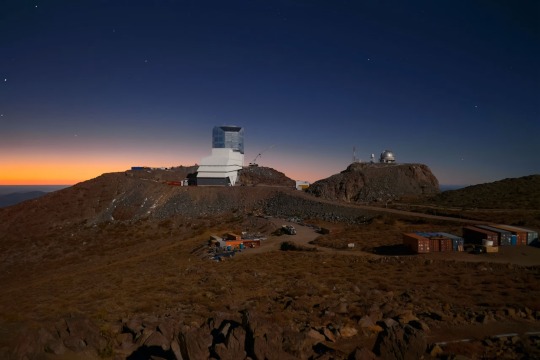
The Vera C. Rubin Observatory sits beneath a twilight sky at its site in Chile. Rubin is being built to conduct the Legacy Survey of Space and Time (LSST). This survey will observe the entire visible southern sky every few nights over the course of a decade, capturing about 1,000 images every night. Rubinobs/NSF/Aura
Everlasting Change
Like all ground-based observatories, VRO will be hampered by the proliferation of low-flying, highly reflective satellites, particularly those belonging to SpaceX’s internet-providing Starlink megaconstellation. The roughly 4,500 Starlinks currently in orbit are already adding bright, white streaks to many astronomical images. SpaceX plans to launch tens of thousands more satellites in the future, which could mean 30 percent of all VRO images would be graffitied.
At present, there is no clear solution to this problem. “We will have to deal with it because we don’t have a choice,” says Bernardinelli. But while megaconstellation light pollution will mar some of VRO’s views, it won’t stop the observatory from being the discovery engine that astronomers have long dreamed about.
“The detail that will be revealed, this beautiful complexity that’s gonna show up—that will fine tune our ability to go from broad-brush histories of the solar system” to something more measured and precise, says Bannister. Currently, as scientists study the outer solar system’s structure, it’s like “seeing faces in clouds.” The VRO will mean that “we have Michelangelo’s David.”
#Telescope 🔭 | Planets 🪐 🪐 | Planetary Moons 🌓 🌒 🌑 | Asteriods ☄️ | Solar System | Space#9th Planet#Vera C. Rubin Observatory
1 note
·
View note
Text

First images from the Vera C. Rubin Observatory.
With its 3.2 billion-pixel camera, the Rubin Observatory captures extremely detailed photographs including this small piece of a much larger image of the Virgo Cluster, a group of galaxies some 55 million light-years away.

Another snippet of Rubin’s photograph of the Virgo Cluster includes the spiral galaxies NGC 4411 and NGC 4411b. Above are a trio of interacting galaxies “Every time you zoom in, you find a new interesting detail,” said Clare Higgs, an outreach specialist working for Rubin.
128 notes
·
View notes
Text
First light from the Vera C Rubin Observatory
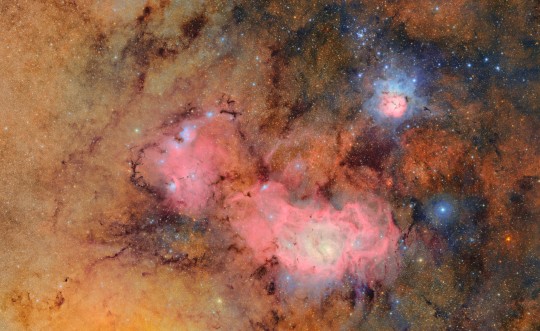
This image combines 678 images taken by the Vera C Rubin Observatory over seven hours. Combining many images in this way reveals otherwise faint or invisible details, such as the clouds of gas and dust of the Trifid nebula (top) and the Lagoon nebula, thousands of light-years from Earth.
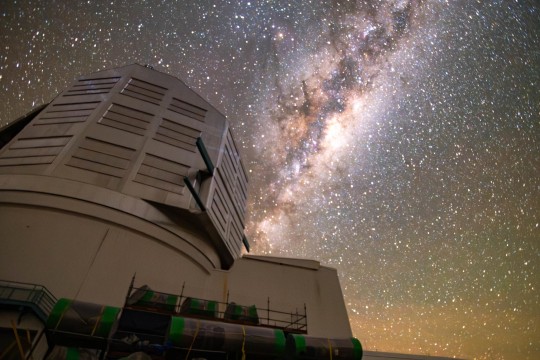
This new observatory is named in honor of trailblazing astronomer Vera C Rubin, who found conclusive evidence of vast quantities of invisible material known as dark matter.
Understanding the nature of dark matter, dark energy, and other large-scale cosmic mysteries is a central focus of the new observatory's mission. Dark energy is the mysterious and colossally powerful force that appears to be pushing galaxies away from each other at an accelerating rate. Although dark matter and dark energy collectively comprise 95% of the Universe, their properties remain unknown.
More at the official Rubin Observatory site: X
39 notes
·
View notes